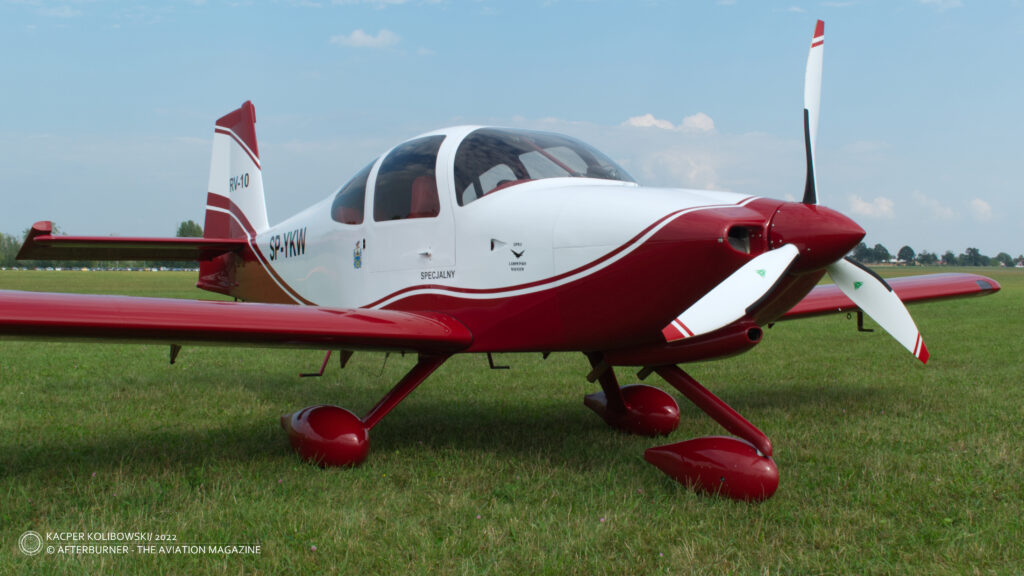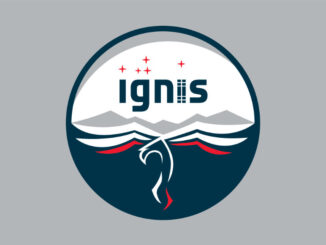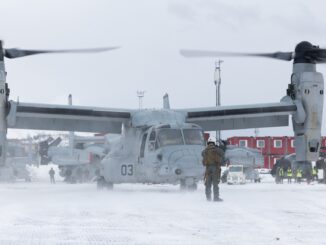 Van’s Aircraft RV-10 (SP-YKW, home kit-built aeroplane), static display at Aeroplane, Helicopter and Autogyro Rally in Płock, August 2022.
Van’s Aircraft RV-10 (SP-YKW, home kit-built aeroplane), static display at Aeroplane, Helicopter and Autogyro Rally in Płock, August 2022.
The RV-10 aircraft, was designed by Richard VanGrunsven, founder and chief designer of the Van’s Aircraft company, in response to aviation market interest in a four-seat aeroplane of RV aircraft family, introduced in 1972.
However, unlike previous two-seat aeroplanes developed by VanGrunsven – designated RV-3 to RV-8 and characterised by exceptionally light handling and aerobatic capabilities – the RV-10 is a typically touring aircraft. Therefore, this time the focus was put on better flight stability and larger payload capacity, instead of the aforementioned characteristics.
The official motto of the Vans´s Aircraft company is to design their aeroplanes with ´total performance´ ability. And it was no different in case of creating the RV-10. Its design combines classic and modern solutions, as most of the fuselage is made of aluminium, while the cabin section, together with doors, is made of lightweight composite materials.
It is worth mentioning that what distinguishes the RV-10 from its predecessors are exactly the the cabin doors mentioned above. And that´s because it is the first aeroplane of the RV family equipped with two gull-wing doors, instead of a hinged or sliding canopy.
During the early stage of development it was planned to power the aircraft by a range of inline six-cylinder engines, including 210 hp Continental IO-360ES, as well as more powerful Lycoming IO-540, generating 235 or 260 hp.
On 29th May 2003, prototype of the RV-10 made its first flight, flown by Richard VanGrunsven himself. The aircraft used the most powerful of the considered engines and turned out to perform definitely satisfactorily.
Then, two factory technology demonstrator aircraft were made, equipped with the IO-540 and the IO-360 engine, respectively. Nevertheless, finally it was decided to move away from use of the least powerful Continental engine, as the Lycoming-made propulsions were found to be the preferred choice among most of the RV-10 operators.
The combination of the lightweight airframe with the reliable, economic and powerful engine – as a consequence – offering a good power-to-weight ratio, had a direct impact on performance. It is enough to say that cruising speed of the RV-10 is 317 kph, with top speed reaching 335 kph. Flight range of that small aeroplane is as much as 1,328 kilometres. In addition, the aircraft can operate from unpaved airfields and needs only about 200 metres of runway for take-off and landing.
Similarly to previous aeroplanes made by Van´s Aircraft, the RV-10 was developed using computer-aided design. Guided by experience with the development of other aircraft from the RV family, its construction was made even simpler and quicker, by implementing pre-drilled holes for rivets and bolts in metal elements of the RV-10 kit. The manufacturer claims that even an unexperienced builder can assemble the aircraft himself in around 2,000 working hours.
With great performance for an aeroplane of its class and ease of self-assembly, the RV-10, like the other aircraft produced by Van’s Aircraft company, had gained popularity not only on domestic US market, but also in many other countries. As of November 2021, 995 examples of the RV-10 have been sold and built all over the world.
Among them, there is the example presented above within our Photo of the Week series. This particular RV-10, registered as SP-YKW is one of the aircraft of this type flying in Poland. At the end of August 2022, the aeroplane took part in Aeroplane, Helicopter and Autogyro Rally in Płock, organised on the occasion of the Polish Aviation Day.



